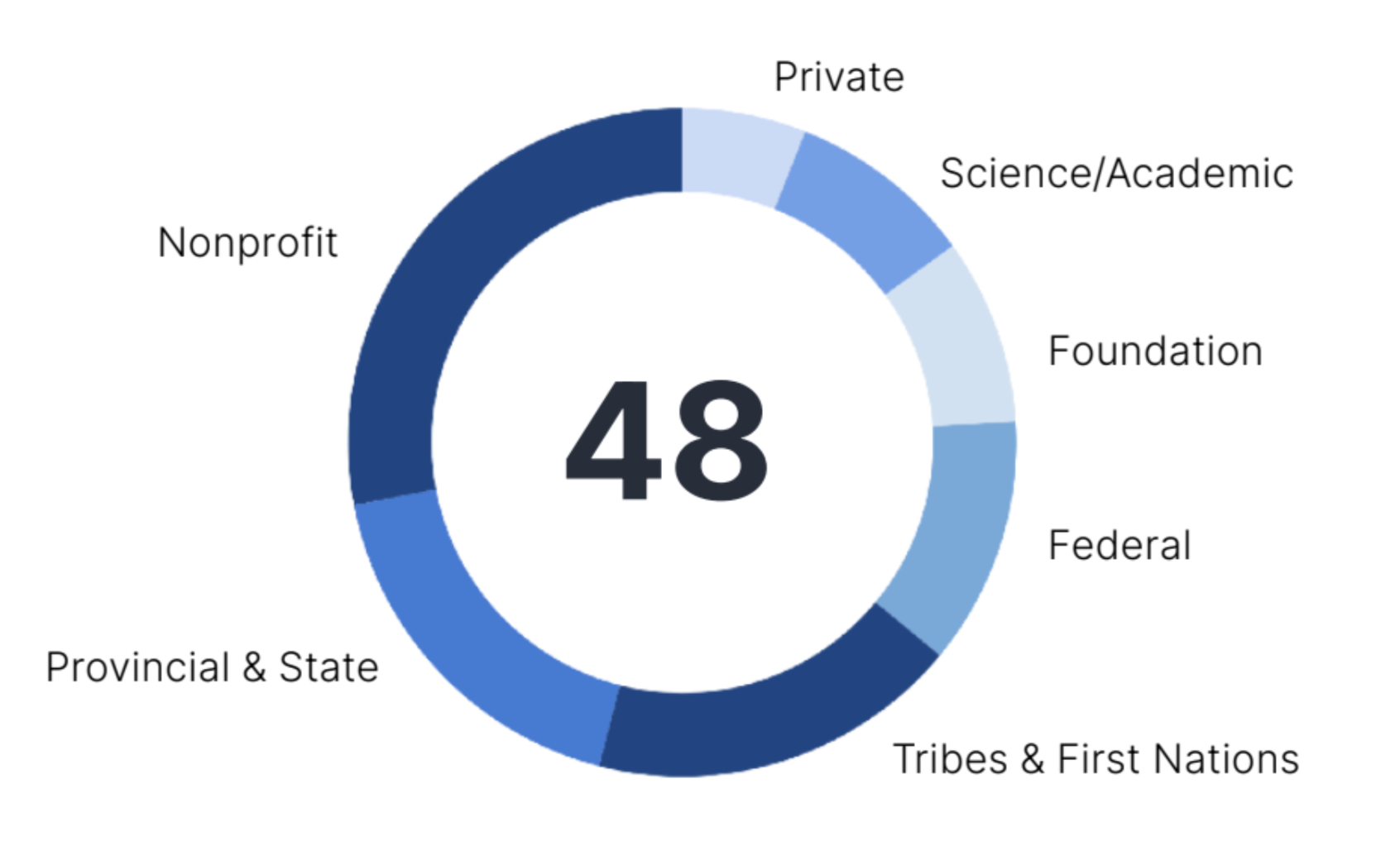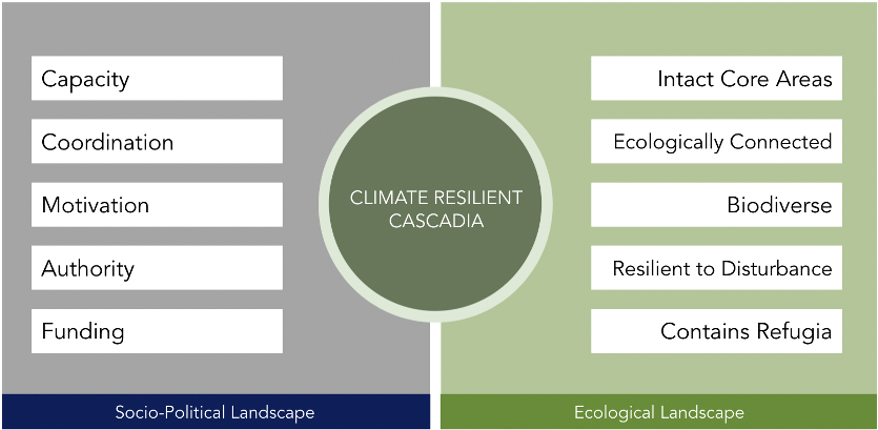Blueprint Development
The Blueprint for a Resilient Cascadia was developed through a collaborative, transparent and inclusive co-production process
Our collaborators

The Blueprint development process engaged dozens of land and wildlife decision-makers and other conservation stakeholders from Washington and British Columbia. Participants represented a diverse suite of partners, including federal, state and provincial governments; tribes and First Nations; and nonprofit organizations. The distribution of Blueprint participants’ affiliations is shown in the figure to the left.
Our theory of change
The Theory of Change that guides the Blueprint identifies five socio-political enabling conditions that are critical for implementing transboundary climate adaptation for Cascadia’s natural systems: capacity, coordination, motivation, authority and funding.
This Theory of Change was developed through a series of workshops with the Cascadia Partner Forum’s Climate Adaptation Core Team.

Our process
Participants engaged in three working groups that approached development of the Blueprint from three complementary angles. One group focused on identifying strategies and actions needed to achieve the socio-political enabling conditions at the scale of the whole landscape. The other two groups identified additional actions needed to effectively achieve the enabling conditions for two priority conservation targets - salmonids and carnivores.
-

Whole Landscapes
Facilitated by Meade Krosby
-

Salmonids
Facilitated by Carly Vynne
-

Carnivores
Facilitated by Bill Gaines
These working groups were supported by the Climate Impacts Group at the University of Washington. Together, they drew on literature reviews, expert interviews and participant experience and expertise to identify key strategies and actions for addressing socio-political barriers to effective adaptation for Cascadia’s natural systems.
Our timeline

The Blueprint is being developed comprehensively but delivered in phases. This process will result in a collaborative, living climate adaptation strategy at the regional scale. The process of building and sharing these pieces is as important as the product.
The first phase of the project, which included developing the Blueprint and the Resilient Cascadia Action Library, was completed in January 2022.

